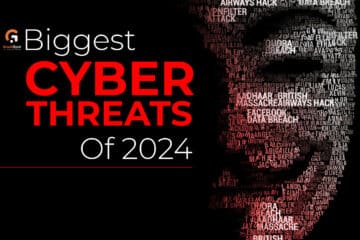What is Information Warfare?
Information warfare involves using information and communication technologies (ICT) to gain an advantage over an adversary, encompassing actions like disrupting their information systems, spreading disinformation, and manipulating public opinion, while also protecting one’s own information and systems
Introduction
Information warfare (IW) refers to the use and manipulation of information, technology, and communication strategies to influence or disrupt an adversary’s decision-making, cognitive processes, or operational systems. It encompasses various methods, including psychological operations (PSYOPS), cyberattacks, media manipulation, and propaganda, all aimed at gaining a strategic advantage. In a digital age marked by constant information exchange, IW has become a crucial tool for both state and non-state actors involved in geopolitical, military, economic, and social conflicts.
The concept of information warfare has evolved significantly over the past century, with its origins traceable to military and psychological tactics during the early 20th century. With the rapid expansion of digital technologies and the internet in recent decades, IW has grown in complexity and scope. Today, it spans across various domains, from cyberspace and social media to traditional broadcasting, affecting national security, international relations, and public perceptions.
Historical Roots of Information Warfare
The concept of using information as a weapon is as old as warfare itself. In antiquity, rulers and military leaders often engaged in strategic deception, misinformation, and psychological tactics to disorient their enemies. For example, Sun Tzu’s The Art of War emphasized the importance of deception, suggesting that “all warfare is based on deception.” The strategic manipulation of information to gain an upper hand in warfare can be seen in many of the great historical military campaigns.
One of the most significant early instances of information manipulation was during World War I and World War II. Propaganda campaigns were widespread, with both the Axis and Allied powers using information to shape public opinion and weaken the morale of their enemies. In World War I, for instance, both sides used posters, leaflets, and newspapers to demonize the other side, shape perceptions, and galvanize their populations for war. Similarly, World War II saw the large-scale use of radio broadcasts, films, and news outlets to spread propaganda and maintain support for the war effort.
As technology progressed, the ability to influence and control information became increasingly sophisticated. In the Cold War, the United States and the Soviet Union turned information warfare into a critical aspect of their global rivalry. This period marked the rise of psychological operations (PSYOPS), espionage, and the early use of electronic warfare. The media became a powerful tool to influence not only public opinion but also global political landscapes.
The Cold War: The Formalization of Information Warfare (1980’s and 1990’s)
During the Cold War, the ideological battle between the United States and the Soviet Union extended beyond military combat into the realm of information. Propaganda, disinformation, and covert media operations became crucial tactics for influencing both domestic and foreign populations. The U.S. employed various psychological operations (PSYOPS) to counter Soviet influence, while the Soviet Union used disinformation campaigns to destabilize the West.
This period also saw the emergence of espionage-related information operations, as both superpowers sought to infiltrate each other’s systems to gain strategic intelligence. Information was seen not just as a tool of public persuasion but also a military weapon that could target critical infrastructures, such as communication networks, industrial bases, and even electoral processes.
In the 1980s and early 1990s, with the advent of personal computers, the potential for cyber operations as part of information warfare began to materialize. At the time, however, these early cyber attacks were limited in scope and capability, and the world was not yet prepared for the transformative impact the digital age would have on warfare.
Learn Cyber Security
Master cybersecurity in just 45 days! Gain hands-on skills, protect networks, and become job-ready with expert training. Enroll now and secure your future!
The Digital Revolution: A New Era of Information Warfare
With the rapid rise of the internet in the late 20th and early 21st centuries, information warfare underwent a profound transformation. The proliferation of digital technologies, mobile devices, and social media networks revolutionized how information could be shared, manipulated, and weaponized. In this new environment, information became even more pervasive, instantaneous, and complex.
By the 1990s, the concept of “cyber warfare” emerged, reflecting the growing importance of digital systems and networks as a target for disruption and manipulation. The 1991 Gulf War was a watershed moment in the history of information warfare. The conflict demonstrated the power of real-time media coverage, satellite communications, and military integration of information technologies. The U.S.-led coalition’s use of advanced technological warfare, combined with psychological operations and media control, illustrated the growing role of information in modern conflict.
One of the most significant aspects of this period was the increasing use of media to shape public perception and political outcomes. During the Gulf War, both the U.S. military and the Iraqi government understood the importance of information in shaping public opinion, not just domestically but also internationally. The 1990s and early 2000s saw the first instances of “Infowar,” where various actors leveraged digital platforms and media to gain strategic advantages in global conflicts.
This new era of information warfare is characterized by the integration of cyberspace into the very fabric of military, political, and social strategies. The ability to manipulate and control information has become an essential tool for gaining competitive advantage, whether in the realm of geopolitical competition, elections, or even social movements. The rise of digital technologies—particularly the internet, social media, and mobile communication—has introduced both opportunities and vulnerabilities that have reshaped the landscape of conflict.
The Rise of Cyber Warfare and the Age of Disinformation
The 21st century ushered in a new era of information warfare, where cyber operations became central to modern strategies of conflict. As the world became increasingly interconnected through the internet, the vulnerabilities of digital infrastructure became apparent. Hacktivism, cyber espionage, and state-sponsored cyberattacks became common tools of information warfare, with countries like the United States, Russia, China, and Iran leading in cyber capabilities.
One of the defining features of this new era is the increased use of disinformation, a tactic that seeks to mislead or deceive populations by spreading false or distorted information. Disinformation campaigns, often propagated through social media platforms like Facebook, Twitter, and YouTube, have been used extensively to manipulate public opinion, sway elections, and exacerbate social divisions. These tactics are designed to influence the cognitive and emotional processes of individuals, creating confusion, distrust, and polarization.
Notable Examples of Modern Information Warfare
- The 2007 Cyberattacks on Estonia: In 2007, Estonia became the victim of a series of coordinated cyberattacks that targeted its government institutions, businesses, and media. The attacks were attributed to Russia, though the Russian government denied involvement. The cyberattacks crippled Estonia’s online infrastructure for several weeks, demonstrating the potential of cyber operations to disrupt a nation’s functioning. This event marked a significant moment in the history of cyber warfare and highlighted the vulnerabilities of highly digitalized societies.
- The 2016 U.S. Presidential Election: One of the most widely discussed instances of information warfare in recent years was the Russian interference in the 2016 U.S. presidential election. Russian operatives used social media platforms, fake news websites, and propaganda to influence public opinion, promote divisive political messages, and sow discord among the American electorate. These efforts, aimed at undermining trust in the electoral system and fostering political polarization, were a clear demonstration of how information warfare can be used to influence democratic processes.
- The Syrian Civil War: In the Syrian Civil War, various factions used information warfare tactics to advance their respective agendas. The Syrian government, opposition groups, and external actors all used propaganda, disinformation, and media manipulation to shape the narrative of the conflict. The use of social media platforms like Twitter and YouTube allowed both state and non-state actors to broadcast their messages globally, influencing international support and intervention in the conflict.
Types of Information Warfare Tactics
- Cyberattacks and Cyber Espionage: One of the most significant tools in information warfare is cyberattacks, which target computer networks, databases, and critical infrastructure. These attacks can take many forms, from Distributed Denial of Service (DDoS) attacks that flood systems with traffic to data breaches and ransomware attacks. Cyber espionage, the practice of stealing sensitive information or disrupting an adversary’s operations, is another key aspect of information warfare.
- Social Media Manipulation: Social media platforms have become a primary battleground in information warfare. Actors engage in activities such as spreading fake news, creating bots to amplify certain narratives, and using algorithms to target individuals with specific political ads. These tactics aim to influence public opinion, sway elections, or create social discord. The speed at which information spreads on social media makes it a particularly powerful tool for influencing mass perceptions.
- Disinformation Campaigns: Disinformation campaigns involve the deliberate spread of false or misleading information with the intent to deceive. These campaigns are often used to manipulate public opinion, create confusion, or destabilize a political system. In some cases, disinformation may involve deepfakes or doctored videos and images that are designed to look legitimate but contain fabricated content.
- Psychological Operations (PSYOPS): Psychological operations are a form of influence used by military and intelligence agencies to affect the behavior, emotions, and perceptions of adversaries. PSYOPS may include leaflets, radio broadcasts, or the use of social media to spread targeted messages. These operations aim to demoralize or manipulate an adversary’s decision-making processes.
The Impact of Information Warfare
Information warfare has a significant impact on both national security and global stability. In traditional warfare, military force is the dominant tool used to achieve strategic objectives. However, in modern information warfare, the battlefield extends far beyond the physical realm to cyberspace and the digital world. Information warfare can affect the political stability of entire nations, manipulate public opinion, and disrupt essential infrastructure.
- Political Manipulation: Information warfare has been used to manipulate political outcomes, as seen in the Russian interference in the 2016 U.S. election. Disinformation campaigns can sway public opinion, polarize voters, and create division within a population. In countries with vulnerable political systems, information warfare can be used to undermine democratic institutions, making it harder for people to trust their leaders or the electoral process.
- Economic Disruption: Information warfare can also have significant economic consequences. Cyberattacks on financial institutions, for example, can cause significant financial losses and disrupt the stability of markets. Similarly, the manipulation of information in the form of fake news and disinformation can affect consumer behaviour, stock prices, and trade relations between countries.
- Social Polarization: The spread of disinformation and fake news can deepen societal divisions, creating distrust between different social groups. Information warfare can exacerbate political, ethnic, or religious tensions, making it difficult for societies to maintain social cohesion. This is particularly concerning in countries with diverse populations or those experiencing existing social or political unrest.
Challenges and Implications of Information Warfare
- Legal and Ethical Issues: The use of information warfare raises numerous legal and ethical challenges. The line between legitimate military tactics and unlawful acts of aggression can be difficult to draw. Additionally, issues surrounding privacy, misinformation, and the protection of democratic processes have become increasingly contentious as state and non-state actors continue to employ information warfare strategies.
- Escalation and Retaliation: The use of information warfare can lead to unintended consequences and escalate conflicts. Cyberattacks, disinformation campaigns, and other forms of IW can provoke retaliation, leading to a broader conflict. The challenge of determining the appropriate response to information warfare makes it difficult for states to navigate this domain effectively.
- The Future of Information Warfare: As technology continues to advance, so too will the methods and tactics of information warfare. Artificial intelligence, machine learning, and quantum computing are likely to play significant roles in future IW strategies. Additionally, the rise of the “Internet of Things” (IoT) and autonomous systems may create new vulnerabilities for nations and organizations to exploit.
Conclusion
Information warfare is a multifaceted and ever-evolving field that plays a central role in modern conflicts. From its early use in propaganda during the World Wars to the sophisticated cyberattacks and disinformation campaigns of the 21st century, IW has become an integral part of military, political, and social strategies. As technology continues to advance, the importance of controlling and manipulating information will only increase, and states, organizations, and individuals must adapt to the challenges posed by this new form of warfare.
In an age of rapidly expanding digital networks and information-sharing platforms, the ability to control, shape, and protect information has become a crucial factor in securing national interests, maintaining social stability, and safeguarding democracy. Understanding the history, techniques, and implications of information warfare is essential for navigating the complex and interconnected world of the 21st century.





Absolute helpfully for me
Great description of infowar
Nice description about the topic
Well-explained content on information warfare!
In today’s digital world, controlling narratives is as impactful as traditional warfare.